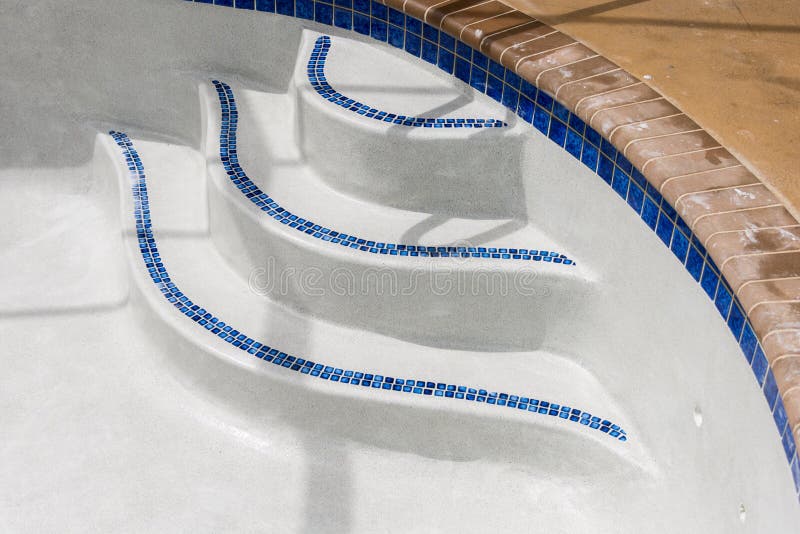
At E-Z Patch, a swimming pool & tile repair supplies company in Phoenix Area, we have always strived to provide repair and construction materials that last.

Rob Cox by July 16, 2013 Fixing Swimming Pool Cracks Cracks in your inground pool? Scary, I know. Cracks in a gunite or concrete pool can conjure up all sorts of fears of worse things. In most cases, pool cracks can be easily and permanently repaired. Let's make a distinction between surface crazing, or check cracks in the plaster, and cracks that run through the pool shell. It's not uncommon for plastered pools to develop small, hairline cracks in the surface of the plaster, especially close to the surface, on the top step for instance.
Cracks that run deeper can be seen in the corners, or where a spa wall joins the pool wall, or may develop behind the tile line, in the bond beam of the pool. Here's how to repair cracks in an inground pool, in 3 ways - the easy way, moderately difficult, and extreme crack repair. The level of difficulty for pool crack repair also tends to match the level of permanence. The more work you put into repairing a pool crack tends to correspond to the longevity and permanence of the repair. Easy Pool Crack Repair For small cracks, the easiest repair you can do is to jump in the pool with a mask and a flathead screwdriver. Scrape the screwdriver down the crack to remove any loose material, and widen the crack a little bit. Next, mix up some in equal parts and roll it into a 'snake'.
Push the putty into the crack and smooth it out with your hand. Moderate Pool Crack Repair For a moderately difficult crack repair, but one with more permanence and more likely to match the plaster color better, start by draining the pool. Avoid draining the pool after heavy rains, and be sure to pump the pool to a far away location, to be sure the water doesn't run underneath the pool. In pools that are located in a topographical depression, or with a high water table, hydrostatic pressure could possibly pop the pool out of the ground. Once the pool is drained, find your hydrostatic relief plastered into the floor. Chip away the plaster inside of the plug, so you can grab it with straight pliers and unthread the hydrostat plug.
Most pools have 4-6 of these plugs. Skype Premium Download Softonic For Android. Open up at least 2 of them - just in case. Next, widen the crack using a 4 inch grinder.
If the crack is small enough, you can also use a drill with a masonry drill bit. You can rent these at any rental shop.
Wear eye and ear protection, heavy gloves, boots and long pants. It will get dusty, so a dust mask is also a good idea. Use care if you use a grinder, they are very dangerous and can easily lop off a finger, or cut a deep gash in your leg if it gets away from you. As you widen the crack, use the grinder or drill to 'dovetail' the crack, which means to cut it at an angle, to create a reverse 'V' in the plaster, and into the concrete beneath. A dovetail cut will improve the success of the repair, as it will hold in your patching material much better than a simple 'V' cut. After you have made your cuts, clean out the crack with a garden hose, to remove any loose material and dust.
Now you can mix up a small batch of - EZ Patch #1, to fill in the crack. If your crack is over 1' deep, or for replacing large chunks of the pool wall, first use a hydraulic cement, from any hardware store, to fill in most of the area, but leave the top 1/2 inch or so, to cover over with plaster mix. Be sure that the crack is moist before you fill the crack.
For the best bond, 'paint' the crack with a bonding additive, such as Acryl 60, just before laying in the cement or plaster mix. For vertical crack repair, use a slightly drier mix, to avoid slump, and check on it every few minutes - it may need a 'trowel-up' with a wet trowel. After the crack has been filled with plaster, it's important to keep the area moist, to prevent the mix from drying out too rapidly. Lay a wet towel or burlap over the area to keep moisture in.
You can also tape plastic over the area, with a few small air holes every few inches. Plaster repair mix is meant to cure underwater, so you can begin to fill the pool immediately after you exit the pool.
Extreme Pool Crack Repair There was a pool that I managed in, Va that was built on a hillside, overlooking a scenic stream. Years of creep on the hillside beyond had cracked the pool right across the floor, and it was visibly tilted - this pool was literally cracked in half.
For cracks in the pool that run down the wall and across the floor of the pool, a more agressive approach to crack repair is necessary, using 'staples'. In this crack repair, all of the 'moderate' crack repair steps above are performed with one unique difference. Every foot or so, a horizontal cut is made perpendicular to the crack, holes are drilled on either side, and a steel or carbon fiber 'staple' is epoxied in place. This method locks the pool wall together on both sides of the crack, like a frankenstein stitch. Several companies produce these staples, with the main supplier being.

